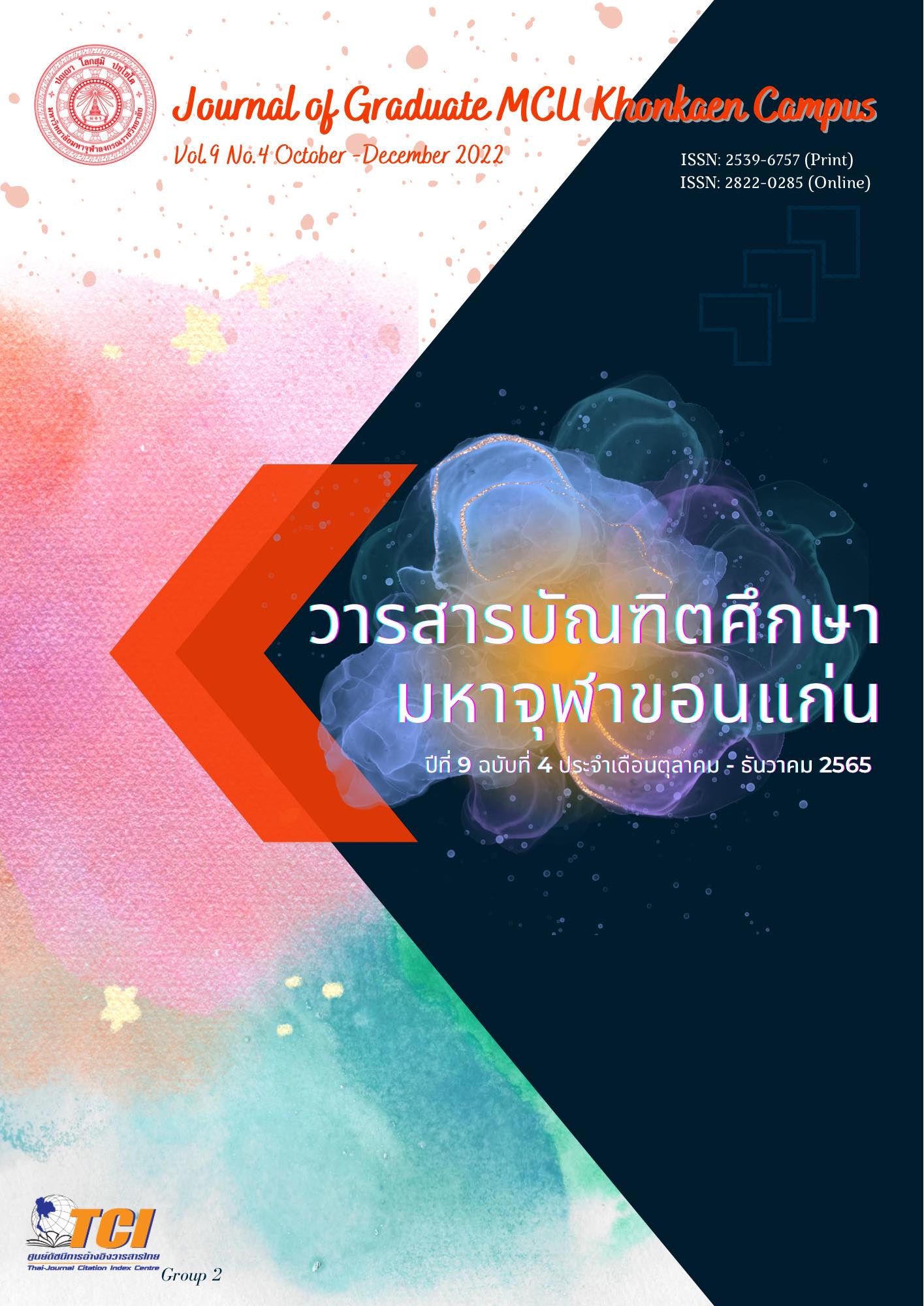Buddhist Cultural Ecology
Main Article Content
Abstract
This paper aims to study the concept of cultural ecology. It is an anthropological concept that focus on the study of socio-cultural changes, emphasis on the influence of the environment as a factor in the process of cultural evolution. In Buddhism, what is known as necessities of Buddhist monks or followers are the environment, both natural and man –made, which affects human life and spiritual development. Ecology in Buddhism is divided into two types: 1) natural ecosystems, there is, non-living ecology, including physical laws and living natural systems, such as, biological laws and psychic law. 2) cultural ecology system. It consists of concrete and abstract cultural ecology.
The integrated Buddhist cultural ecology model consists of 2 aspects: The external Theravada Buddhist cultural ecology according to the 7 Sappaya and the internal ecology based on the 4 Bhavana has two goals: the physical goal is factor of the four necessities of life and the mental goal is the 6 sense-impression to make human habitation a pleasant place to live.
Article Details

This work is licensed under a Creative Commons Attribution-NonCommercial-NoDerivatives 4.0 International License.
References
พระธรรมปิฎก (ป.อ.ปยุตฺโต). (2548). พจนานุกรมพุทธศาสน์ฉบับประมวลศัพท์. (พิมพ์ครั้งที่ 11). กรุงเทพฯ: บริษัท เอส.อาร์.พริ้นติ้งแมสโปรดักส์ จำกัด.
______. (2555). พุทธธรรมฉบับปรับขยาย. (พิมพ์ครั้งที่ 32). กรุงเทพฯ: สำนักพิมพ์ผลิธัมม์.
พระศรีคัมภีรญาณ (สมจินต์ สมฺมาปญฺโญ). (2554). สำรวจสิ่งแวดล้อมเชิงนิเวศวิทยาในคัมภีร์พระพุทธศาสนา. บทความวิชาการ. รวมบทความสัมมนาทางวิชาการนานาชาติ (ภาษาไทย) มหาวิทยาลัยมหาจุฬาลงกรณราชวิทยาลัย. 13 พฤษภาคม พ.ศ. 2554 : 364 – 365.
______. (2554). สารนิพนธ์พุทธศาสตรบัณฑิตประจำปี 2554. กรุงเทพฯ: มหาจุฬาลงกรณราชวิทยาลัย.
พระอธิการสุวิทย์ จกฺกธมฺโม (ปล้องไม้). (2556). การศึกษาหลักพุทธธรรมในการแก้ไขปัญหาสิ่งแวดล้อม. (วิทยานิพนธ์พุทธศาสตรมหาบัณฑิต). พระนครศรีอยุธยา: มหาวิทยาลัยมหาจุฬาลงกรณราชวิทยาลัย.
มหาจุฬาลงกรณราชวิทยาลัย. (2539). พระไตรปิฎกภาษาไทย ฉบับมหาจุฬาลงกรณราชวิทยาลัย. กรุงเทพฯ: มหาจุฬาลงกรณราชวิทยาลัย.
มหามกุฏราชวิทยาลัย. (2535). วิสุทธิมรรคแปลภาค 1 ตอน 1. (พิมพ์ครั้งที่ 7). กรุงเทพฯ: มหามกุฏราชวิทยาลัย.
ราชบัณฑิตยสถาน. (2546). พจนานุกรมฉบับราชบัณฑิตยสถาน พ.ศ. 2542. กรุงเทพฯ: นานมีบุ๊คส์ พับลิเคชั่นส์.
วิทย์ เที่ยงบูรณธรรม. (2556). Nation's Most Comprehensive Dictionaries: Medical Sciences Dictionary (พจนานุกรมวิทยาศาสตร์การแพทย์). (พิมพ์ครั้งที่ 41). กรุงเทพฯ: ดวงกมลพับลิชชิ่ง.
สมเด็จพระธีรญาณมุนี. (2528). “คุณวัด”. วารสารใบลาน. ฉบับที่ 5. 2528 : 10.
Clifford Geertz. (1963). Agricultural Invorution: The Process of Agricultural Change in Indonesia. Berkeley: Univercity of California Press.
Daintith. John; Elizabeth Martin (eds.). (2010). A Dictionary of Science. (6th ed.). New York: Oxford University Press.
Ecological Society of America. (1999). "Biodiversity and Ecosystem Functioning: Maintaining Natural Life Support Processes". Issues in Ecology. Number 4 Fall 1999 : 5.
Harris. M.. Cow. Pigs. (1975)Wars and Witches: The Riddles of Culture. ZLondon:Hutchinson & Co.
Julian H. Steward. (1972).Theory of Culture Change : The Methodology of Multilinear Evolution. Urbana and Chicago: University of Illinois Press.
National Research Council. (2010).America's Climate Choices : Panel on Advancing the Science of Climate Change. Washington. D.C.: The National Academies Press.
Odum. E. P .; Barrett. G. W. (2005). Fundamentals of Ecology. (5th ed.). Georgia: Thomson Brooks Cole.

